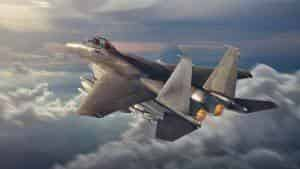IAF now may get an offer from Boeing for F15EX fighter jet as it gets the nod from US government

The Boeing Company reported on Thursday that it had been approved by Washington to sell its newest heavy fighter, the F-15EX, in India.

Seven of the world’s leading fighter producers have already expressed interest in bidding for the ongoing procurement of 114 medium fighters by the Indian Air Force (IAF)—an approximate $20-30 billion order.
The fighter manufacturers that responded to the IAF’s request for information (RFI) floated in 2019 include Boeing with its F/A-18E/F Super Hornet; Lockheed Martin with its single-engine F-21; Saab with its single-engine Gripen E/F; Dassault with its twin-engine Rafale; Eurofighter GmbH with its twin-engine Typhoon; and Russia with two twin-engine fighters – RAC MiG-35 and Sukhoi Su-35.
Offering the F-15EX would result in Boeing withdrawing the Super Hornet from the market. “There is no way Boeing would field two fighters in the same competition,” said Pratyush Kumar, who heads the F-15EX project in Saint Louis, USA. Kumar said Boeing was waiting to see the IAF’s efficiency specifications. Boeing would then decide which fighter it is going to sell.
Boeing is more likely to opt to sell the F-15EX to the IAF while selling the Super Hornet to the Indian Navy, which is independently pursuing the procurement of 57 fighters for its aircraft carriers. The US Army uses the Super Hornet only as a maritime, carrier-deck fighter, even though it sold countries like Australia the F/A-18E/F as a land-based fighter.
The F-15 Eagle joined the US Air Force (USAF) program in its original configuration more than four decades ago. However, it has been continuously revised to remain state-of-the-art. USF’s trust in the F-15 Platform was underscored in July 2020 when Boeing won a $23 billion floating contract for up to 144 F-15EX fighters – the new variant of the F-15. This ensures that F-15EX sustainability and upgrade projects will run for at least another three decades.
The F-15 Eagle, which is flown by many air powers, including Israel, has a formidable air-to-air combat record of 104-0. On the way, Boeing produced a ground attack variant called the Strike Eagle. Now fitted with a new cabin, an active electronically scanned array (AESA) radar, an advanced electronic fighting suite and a fused sensor and data link, the F-15EX has been converted into a multi-role aircraft capable of a wide range of missions.
The aerodynamics of the F-15 has always been top-of-the-line. Able to fly on Mach 2.5, the F-15EX is the fastest fighter aircraft in the world. It carries 13,5 tons of guns, more than the Rafale or the Sukhoi-30MKI. Its range of 1,200 nautical miles allows it to reach targets deep into enemy territory.
On the basis of publicly available US budget estimates, the F-15EX costs $80.3 million per fighter, including the cost of its twin engines. India, however, needs aircraft to be manufactured in India, which includes setting up and certifying a new factory and training staff. That would make the cost considerably higher.
Asked if building a fighter in India would increase its cost unacceptably, Kumar said: “We will sell the F-15EX on the terms and conditions the Indian government wants to buy it.”
Boeing also unveiled the Boeing India Repair Production and Sustainment (BIRDS) Hub on Thursday. This essentially amounts to localizing the servicing, repair and overhaul (MRO) of Boeing platforms used by the Indian Army.
India is one of the biggest Boeing security customers in the world. It currently operates 11 C-17 Globemaster III transport aircraft, nine P-8I Poseidon marine surveillance aircraft and three more on order, 22 AH-64E Apache attack helicopters, six more on order and 15 CH-47F Chinook heavy-lift helicopters.
The BIRDS Hub may also provide assistance, with the acquiescence of New Delhi, to Boeing platforms in operation with other regional countries. This might dramatically increase the export earnings of India’s security.
Recognizing that this will “shape India as a strategic destination for aerospace engineering, servicing, repair and maintenance services,” Boeing said that BIRDS’ training programs would increase skilled labour by creating sub-tier suppliers and medium, small and micro enterprises (SMEs) to create high-quality MRO capabilities in India.”
The IAF’s acquisition of 114 fighters follows the cancellation in 2015 of its 2007 tender for 126 Medium Multi-Role Combat Aircraft (MMRCA) and the procurement of 36 Rafale fighters as a stop-gap measure in 2016. Short of the numbers, the IAF launched the procurement of 114 medium-sized fighters in an operation that closely resembles the MMRCA tender.


